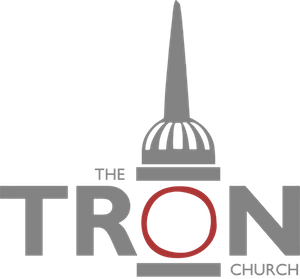"16 So he delivered him over to them to be crucified.
So they took Jesus, 17 and he went out, bearing his own cross, to the place called The Place of a Skull, which in Aramaic is called Golgotha. 18 There they crucified him, and with him two others, one on either side, and Jesus between them. 19 Pilate also wrote an inscription and put it on the cross. It read, “Jesus of Nazareth, the King of the Jews.” 20 Many of the Jews read this inscription, for the place where Jesus was crucified was near the city, and it was written in Aramaic, in Latin, and in Greek. 21 So the chief priests of the Jews said to Pilate, “Do not write, ‘The King of the Jews’, but rather, ‘This man said, I am King of the Jews.’” 22 Pilate answered, “What I have written I have written.”
23 When the soldiers had crucified Jesus, they took his garments and divided them into four parts, one part for each soldier; also his tunic. But the tunic was seamless, woven in one piece from top to bottom, 24 so they said to one another, “Let us not tear it, but cast lots for it to see whose it shall be.” This was to fulfil the Scripture which says,
“They divided my garments among them,
and for my clothing they cast lots.”
So the soldiers did these things, 25 but standing by the cross of Jesus were his mother and his mother's sister, Mary the wife of Clopas, and Mary Magdalene. 26 When Jesus saw his mother and the disciple whom he loved standing nearby, he said to his mother, “Woman, behold, your son!” 27 Then he said to the disciple, “Behold, your mother!” And from that hour the disciple took her to his own home.
28 After this, Jesus, knowing that all was now finished, said (to fulfil the Scripture), “I thirst.” 29 A jar full of sour wine stood there, so they put a sponge full of the sour wine on a hyssop branch and held it to his mouth. 30 When Jesus had received the sour wine, he said, “It is finished”, and he bowed his head and gave up his spirit."
John 19:16-30
The implications of what was said in yesterday's Note are considerable. For one thing, it is clear that to John the victory lay in the cross, not in the resurrection of Jesus. The event of the first Easter morning was simply the evidence of the victory that had been won in the death He died. The victory was won in His dying. In this connection, we should note how John describes that dying: 'He bowed His head and gave up the ghost' (30). The commentators point out that all four gospel writers describe our Lord's dying by the use of active verbs rather than passive. It was something He did, rather than something He suffered. The following comment from a modern commentary is thoughtprovoking: 'Even at the moment of dying John uses active verbs: There is no 'passion' in John; even death is an act for Jesus…. But it appears that John's account can be both nearer to the actual facts of death by crucifixion as well as more noticeably indicative of Jesus' initiative: It appears that in crucifixion the condemned person found that as his body tired he was increasingly unable to keep his chest in a position in which breathing was easy and effective. The tendency was to be increasingly unable to press upwards from the feet, so as to keep the chest in a position where, by holding the head upright, breathing could be properly carried on: It was possibly for these reasons that the legs of criminals crucified were broken: once that were done the crucified could no longer press upward from his feet, and his body would sink down and make breathing impossible. What John's account seems to indicate is that Jesus did not succumb passively to death by crucifixion, but rather deliberately chose the moment of his death by bowing his head, thus restricting his breathing, and causing life to become extinct. So even in his physical death he was an agent, as he certainly is set forth as the agent of his death in a wider sense and frame of reference. Again, if this be a feasible comment, the reader has benefit 'from John's uncanny eye for the symbolic incident to light up an historical occasion with its proper meaning' (Marsh).
